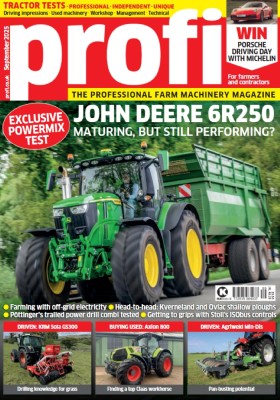With a wet harvest putting extra pressure on farmers who will already be a month behind their usual pre-cultivation hedge trimming routine thanks to new rules on the practice, hedgecutter manufacturer Shelbourne Reynolds is urging operators to ensure machines are fully fit and ready for a months’ extra growth and the increased output required by a reduced trimming window. While the NFU has secured a derogation where oilseed rape and grass crops are being planted in August, the date from which farmers are allowed to cut hedges in other situations has been put back from August 1 to September 1. Using any wet days this month to check over both trimmers and the hedges they are to cut will pay off when trimming begins. That is the message from Shelbourne Reynolds service manager James Swinstead, who reckons another month probably won’t make that much difference to thickness of growth. “But it should be taken into account, especially after the amount of rain we’ve had,” he says. “It could be worth spending a short period of any wet time over harvest to check hedges and banks for loose wire or dumped rubbish, as there will have been another month of summer holiday for this to accumulate. After the amount of rain we’ve had, make sure also that verges and field boundaries are fit to travel on before venturing on with a tractor and trimmer, and that tractor tyres and pressures are in the right condition for working on soft ground.” In terms of the machine itself, Mr Swinstead stresses the importance of flail condition if a neat result and good workrate is to be expected with the minimum of passes. “Check each flail thoroughly for chips, cracks and breaks, as they will result in poor work, vibration and possibly flail breakage. T-flails can be reversed if this hasn’t already been done, but C-flails must be replaced. Whether replacing or reversing a flail, the same process should be done with its opposite number on the rotor, to ensure balance isn’t upset. “Also make sure all hoses and couplings are secure and leak-free, that the hydraulic motor and pump are working correctly, that oil level is sufficient and the filter is in good condition, and that greasing has been done properly. Check for play in pins and bushes, especially on older machines, and that the rotor runs smoothly. Following these points should ensure rapid, clean cutting. “Whether a trimmer is attached permanently to a dedicated tractor or is being put onto one just for the hedgecutting season, also see that linkage and axle bracket fittings are secure, that lights can be clearly seen and that tractor guards are secure and give proper coverage.”
Hedge trimmers need to be ready for action
With a wet harvest putting extra pressure on farmers who will already be a month behind their usual pre-cultivation hedge trimming routine thanks to new rules on the practice, hedgecutter manufacturer Shelbourne Reynolds is urging operators to ensure machines are fully fit and ready for a months’ extra growth and the increased output required by […]






